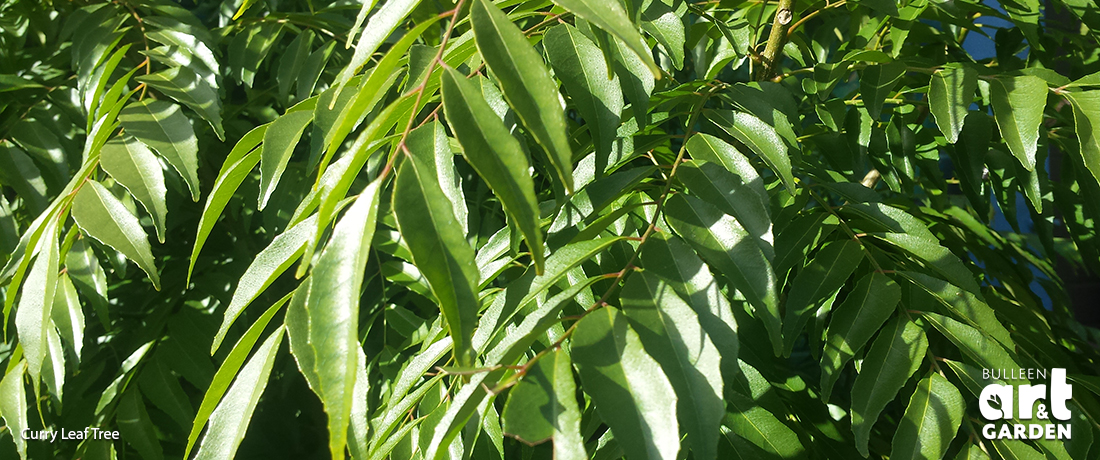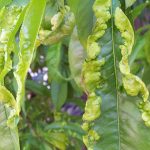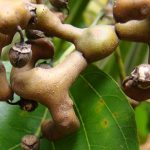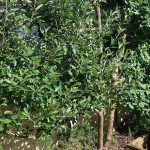
 Important note about plant availability. Important note about plant availability.There are hundreds of factsheets on our website provided for your information. Not all plants will be available at all times throughout the year. To confirm availability please call (03) 8850 3030 and ask for the nursery. |
The Curry Leaf Tree (Murraya koenigii) is an attractive, upright evergreen tree native to India and Sri Lanka, and is a member of the Rutaceae family together with citrus and white sapotes. Its dense canopy produces an abundance of aromatic fern-like leaves that are used to flavour curry dishes and are also used medicinally. Even though this tree normally grows in subtropical and tropical areas, it also does well in temperate climates, requiring a sunny, protected, frost-free position and free-draining but moist soil.
Here in Melbourne’s temperate climate a curry leaf tree will grow to around 2-3m in height, and may lose leaves over winter in colder areas. When grown against a north or west facing wall, which creates a warm microclimate, the trees are less affected by cold and tend to retain their leaves.
Curry leaf trees produce clusters of small fragrant white flowers in summer that self-pollinate to produce shiny purplish-black berries around 1cm long when ripe. The berries do not have a culinary use, although a customer/reader recently advised us she was gifted a Gin with Curry Berries macerated in it which had delicious gin/earthy flavour. The flesh of the berries is edible though the taste described as ‘medicinal’. The berries also contain a single large seed which is toxic and should not be eaten.
The leaves are best used fresh as they lose their flavour when dried. Fresh leaves last for a week in the fridge when placed in a dry plastic bag. To preserve them for longer periods, pick curry leaf leaves when they are green and full of flavour in summer or autumn and freeze them, but keep the leaves intact, don’t strip the small individual leaflets from the leaf stem before freezing them.
Pruning can be carried out through the growing season to keep the tree bushy and to supply a large harvest of leaves for freezing.
In cooking, the leaves impart a subtle warm, smoky, spicy flavour and aroma to curries, meat, seafood and vegetarian dishes, pickles and chutneys. The leaves are often sautéed (lightly fried) first in oil to enhance the flavour, often with other spices and then added to stir-fries or curries.






